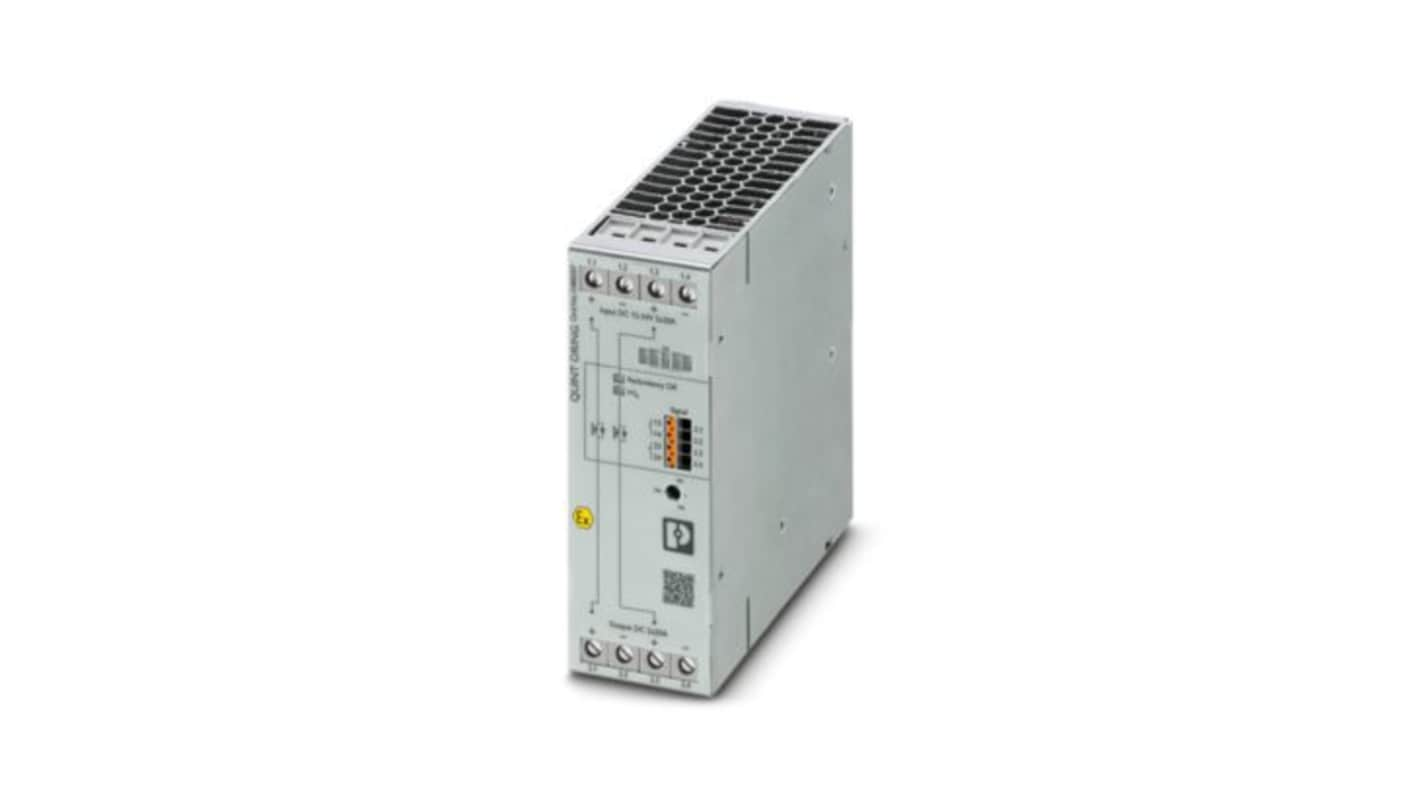Phoenix Contact Power Supply Redundancy Module, for use with Power Supply, QUINT4 Series
- RS Stock No.:
- 536-025
- Mfr. Part No.:
- 1088207
- Brand:
- Phoenix Contact

Subtotal (1 unit)*
£199.88
(exc. VAT)
£239.86
(inc. VAT)
FREE delivery for orders over £50.00
In Stock
- 2 unit(s) ready to ship
Need more? Click ‘Check delivery dates’ to find extra stock and lead times.
Units | Per unit |
|---|---|
| 1 + | £199.88 |
*price indicative
- RS Stock No.:
- 536-025
- Mfr. Part No.:
- 1088207
- Brand:
- Phoenix Contact
Specifications
Technical Reference
Legislation and Compliance
Product Details
Find similar products by selecting one or more attributes.
Select all | Attribute | Value |
|---|---|---|
| Brand | Phoenix Contact | |
| Accessory Type | Redundancy Module | |
| For Use With | Power Supply | |
| Series | QUINT4 | |
| Input Voltage | 24V | |
| Output Voltage | 0.1V | |
| Select all | ||
|---|---|---|
Brand Phoenix Contact | ||
Accessory Type Redundancy Module | ||
For Use With Power Supply | ||
Series QUINT4 | ||
Input Voltage 24V | ||
Output Voltage 0.1V | ||
- COO (Country of Origin):
- CN
The Phoenix Contact QUINT4-ORING redundancy module is engineered to enhance the reliability of your power supply systems. Designed for seamless DIN rail mounting, it operates within a voltage range of 12 V DC to 24 V DC, providing robust redundancy through its dual output capabilities. The innovative ACB Technology (Auto Current Balancing) optimises load distribution, significantly prolonging the lifespan of your power sources while driving down your operational costs. With built-in monitoring features, this module ensures constant oversight of redundancy conditions. Ideal for industrial automation and critical applications, it stands out for its superior design and extensive safety standards compliance, including ATEX and IECEx approvals. The QUINT4-ORING module is your trusted solution for maintaining steadfast power availability.
Offers dual outputs to guarantee maximum system availability
Equipped with surge protection tailored for specific applications
Features ACB Technology that doubles the service life of power supplies
Includes permanent redundancy monitoring for system assurance
Displays efficiency rates as high as 99% under optimal conditions
Designed for easy installation on standard DIN rails
Constructed from robust materials ensuring durability in industrial setups
Provides a wide operating temperature range for versatile use
Meets stringent safety regulations across multiple international standards
Equipped with surge protection tailored for specific applications
Features ACB Technology that doubles the service life of power supplies
Includes permanent redundancy monitoring for system assurance
Displays efficiency rates as high as 99% under optimal conditions
Designed for easy installation on standard DIN rails
Constructed from robust materials ensuring durability in industrial setups
Provides a wide operating temperature range for versatile use
Meets stringent safety regulations across multiple international standards
Related links
- Phoenix Contact Power Supply Redundancy Module QUINT4 Series
- Phoenix Contact Redundancy module QUINT4-S-ORING/12-24DC/1X40/+ Series
- Phoenix Contact Redundancy module QUINT4-S-ORING/12-24DC/1X40 Series
- Phoenix Contact Power Supply Accessory, QUINT4 Series
- WAGO Power Supply Redundancy Module, 787 Series
- Siemens Power Supply Redundancy Module, SITOP Series
- Allen Bradley Power Supply Redundancy Module 1606 Series
- Phoenix Contact Redundancy module
